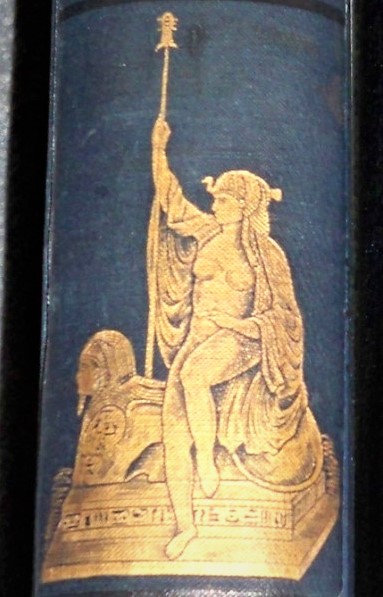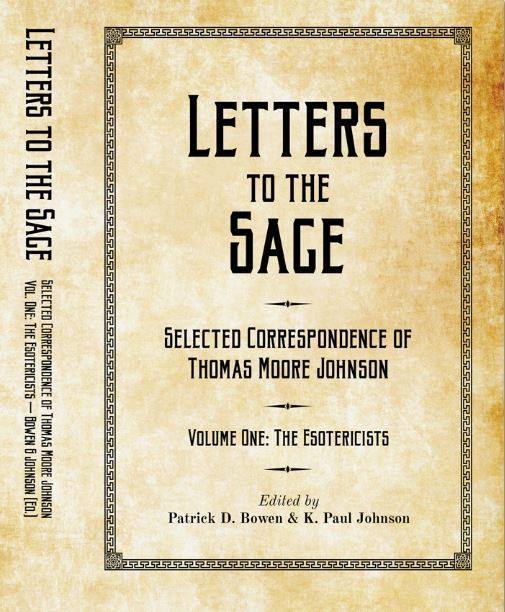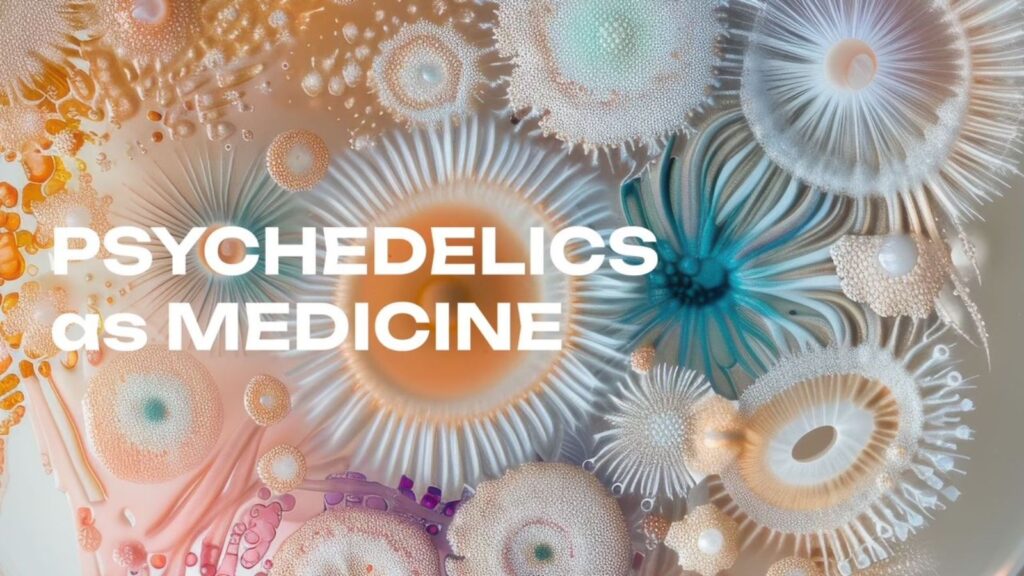In the PRS Library I also found a newspaper called The Platonist which featured American translations of the Neoplatonists from a time that most of us associate with Billy the Kid. I imagined a dusty western street, an upstairs office in a plank building, and there inside a small room, in the glow of a lamp, a hardy soul burning the midnight oil, scribbling out the sublime communications left by pagan philosophers over a thousand years before. Alexander Wilder, Thomas Johnson, Kenneth Sylvan Guthrie, even at PRS I could find out very little about them.
With the help of the internet in 2013 I returned to these studies. A wealth of old and new materials were now available. The research presented in this introduction began as a series of essays for Newtopia Magazine entitled “The Platonist on Sunset Boulevard,” referring to a bound edition of The Platonist I had once serendipitously acquired in a shop across from the Whisky A Go Go.
As a journalist Alexander Wilder supported the abolition of slavery in the United States. As an elected official he helped end Boss Tweed’s corrupt reign over New York. As a physician Wilder pioneered what would later become known as holistic medicine. As a social activist he was an early feminist, publishing Plea for the Liberal Education of Women in 1884. As a book editor he helped Madame Blavatsky complete Isis Unveiled. As a young man Wilder was a member of the notorious Oneida cult. Later in life he lectured at the New England Transcendentalist Concord School of Philosophy. The author of a nine-hundred-page history of medicine, and of books on alchemy and theurgy, he somehow found the time to write, edit and translate articles for dozens of publications, over almost sixty years, on a diverse range of subjects including Platonism, Hermetic studies, and the dynasties of ancient Egypt.
During the Dark Ages and after, apart from the writing of St. Augustine, certain works by the Church Fathers, and by the 13th century Franciscan St. Bonaventure, Plato and Platonism all but disappeared from European culture. When Ficino reintroduced Platonism to the west he brought to it the mystical perspective of an Orphic. In fact, he performed the Orphic Hymns with appropriate incenses, accouterments and astrological timing. At the turn of the 19th century Thomas Taylor (and Floyer Sydenham) sparked a Platonic revival that had Shelley translating Plato’s Banquet in England and Emerson singing the praises of Proclus in America, where Plato became a popular pastime, especially among cultured women in the Old West. Ficino through Taylor cast a long shadow, deeply influencing famous American writers like Thoreau and Poe.
In Plato’s Ghost (2009) Cathy Gutierrez argues convincingly that Platonism deeply informed American Spiritualism. Not only did mediums find reincarnation in Plato’s work, they also found the idea of soul mates in his description of how all human souls were split in two so they strive to join again through many lifetimes. In Platonic recollection American spiritualists found the best description and endorsement of the activities of mediums who claimed to be reacquainting souls with their true histories, explaining suffering as not chaos but the consequences of forgotten mistakes, often in a past life, sometimes in another world.
As Gutierrez writes in Plato’s Ghost:
Reports of Plato clubs were serialized in the Atlantic Monthly, magazines wrote multivolume accounts titled `Plato in History’ and the Yale Review kept readers current on new translations. In 1869, the New Englander sported a densely packed, thirty two page “defense” of Plato as a proto monotheist, and in the same year a pamphlet titled “The Eclectic Philosophy” was circulated with “An Outline of the Interior Doctrines of the Alchemists of the Middle Ages.” The former endeavors to explain the entire history of Neoplatonism, beginning, oddly, several centuries before Plato and laying claim to a single, united truth known to the ancients and covered loosely under the umbrella of Neoplatonism. From vaunted literary minds to the conspiracy theorists of their day, Americans were awash in Platonic and Neoplatonic writings and thought.
The community also practiced what they called stirpiculture but we call eugenics. Committees chose breeding pairs hoping to create perfect offspring. Parents weren’t allowed to bond too closely with their children. What did Wilder think of the practice they called Mutual Criticism, when a committee or the general assembly would criticize members harshly? Victims were expected to be grateful for the good advice. Oneida had branches in New York, New Jersey, Connecticut, Vermont, and Ontario, Canada. Their businesses flourished. From canned fruits and vegetables to animal traps, from silk thread to leather bags and straw hats. But their biggest success was silverware. Wilder didn’t last long at Oneida; he also remained celibate except for a brief marriage.
1857 was an important year for Alexander Wilder. He prepared the charter for the teacher’s college at Illinois Normal University. The American Institute of Homeopathy released a series of pamphlets written by him. And he moved to New York City to become an editor at The Evening Post. The latter job apparently suited him. He spent thirteen years with The Post. Political experience and knowledge of financial matters was a side benefit. He wrote: “I became clerk of the committee on Ways and Means of the Assembly and served in that capacity several sessions.”
Wilder met Hitchcock through a mutual friend, a bookseller who arranged the meeting for Wilder who was a fan of Hitchcock’s books, including Swedenborg a Hermetic Philosopher (1858), and The Story of the Red Book of Appin(1863) where Hitchcock shared his theories about alchemical metaphors in fairy tales. In 1857 Hitchcock had anonymously published Remarks on Alchemy and the Alchemists, which anticipated Jung by almost a hundred years in the theory that alchemical language was actually a symbolic code for the psychology of enlightenment. Hitchcock argued that the alchemical mercury was human conscience. Until the conscience is awakened the alembic (human being) contains only base metals (ignorance and suffering). Hitchcock wrote that fire and sulphur were alchemical symbols for conscience because conscience burns until what is left is pure. Wilder appears to have based his own 1869 work Alchemy or the Hermetic Philosophy on Hitchcock’s book. At the beginning of the Civil War, Hitchcock sold his library to the great regret of Wilder who hated to see such a comprehensive collection scattered.
Around 1864 ex-Mayor Havemeyer, Horace Greeley, and other powerful notables decided New York City needed an Eclectic Medical College. They turned to Wilder to prepare the charter. Just after the Civil War ended in 1865 Wilder pushed the charter through the legislature despite the opposition of traditional doctors. Wilder was the right man in the right place at the right time. A friend of the governor, he knew every member of the legislature personally. They all knew him to be an honest, intelligent scholar, a true man of integrity. Wilder had a logical answer to every protest the old school doctors could summon. Besides, after five years of Civil War the United States needed as much medicine as it could get. The college was established.
Eclectic medicine was botanically based. Today we’d call it herbal medicine. As for the competition: “Medical Colleges were rare,” Wilder wrote, “except those of the dominant school, and these would graduate nobody except with the assurance that he would adhere to the approved practice. Physicians at this time were often illiterate; physiology was almost an unknown science; materia medica limited to brief dimensions; and practice consisted of bleeding, the administration of calomel, antimony, and little else.”
Wilder described an experience in his youth that influenced his ideas about medicine. “Being constantly found fault with whether I was right or wrong and overborne by the cruel despotic will of another had depressed me, till the digestive and nervous functions were impaired.” Or as he put it elsewhere, hopelessness kills. He turned to Plato’s belief that music could cure illness to support his point of view that a life lived in harmony is a healthy life.
Even though Wilder refused to campaign for the office in 1871 he was elected New York City Councilman in a landslide on a ticket promising to end the corruption of the notorious Boss Tweed. Wilder took office on January 1, 1872 but soon learned the new boss was just as tyrannical as the old. So he never ran for office again. In 1872 Wilder became an editor at Harper’s Weekly. Despite refusing the position repeatedly, in 1873 he became Professor of Physiology and Psychology at the Eclectic Medical College of New York. He was also made co-editor of their journal The Medical Eclectic.
Few of Wilder’s colleagues in the political, journalistic, and medical worlds knew about his occult interests. He took no extraordinary measures; the friends who respected his esoteric learning rarely overlapped with his friends in public life. In the Transactions of the Eclectic Medical Society of the State of New York, amid the exchange of cures and medical tips could be found Wilder’s writing about Plotinus and alchemy, illustrating how his esoteric interests could be considered scholarly, and how expert he was at framing respectable contexts and legitimizing them with historical precedents.
Why had Olcott rung the bell? “He had been referred to me by Mr. Bouton.” Wilder worked for J.W. Bouton as an editor, proofreader (for English and Hebrew) and expert on esoteric subjects. Bouton bought the copyright for Isis Unveiled and refused to return it to the author. Blavatsky wanted to give her book the title A Skeleton Key to Mysterious Gates. The mystery of why a book that has so little to do with Egypt should be called Isis Unveiled is solved by a letter from Wilder included in this volume: “Mr. Bouton is entitled to that distinction. He was a skillful caterer in the bookselling world to which he belonged, but he had business ability rather than a sense of fitness. He once published the treatise of R. Payne Knight on Ancient Art and added pictures relating solely to Hindu mythology, entirely foreign to the subject. This work of Madam Blavatsky is largely based upon the hypothesis of a prehistoric period of the Aryan people in India, and in such a period the veil or the unveiling of Isis can hardly be said to constitute any part. On the contrary, it is a dramatic representation peculiar to the religion and wisdom of Egypt. Certainly the problems of Egyptian lore are to be considered with other pens than those with which `Isis Unveiled’ was written.” By “skillful caterer” Wilder means that Bouton liked to include controversial illustrations. The unveiled Isis on the first edition was quite a sexy graphic for those days.
In 1878 Bouton had committed another publishing gaffe. He released only volume one of the two volume obscurity Anacalypsis: An Attempt to Draw Aside the Veil of the Saitic Isis or an Inquiry into the Origin of Languages, Nations and Religions by Godfrey Higgins, an enormous and marvelously learned and imaginative work of mingled fact and mistaken assumptions, among the books that inspired Borges to write “Tlön, Uqbar, Orbis Tertius.” Perhaps Bouton never published the second volume because readers didn’t appreciate the way he shrank the size of such a word stuffed tome leaving them squinting at tiny print. With both veil and Isis in its title Anacalypsis seems to have been a possible inspiration for Bouton’s christening of Blavatsky’s book as Isis Unveiled.
And what did he think of Blavatsky herself? “She did not resemble in manner or figure what I had been led to expect. She was tall, but not strapping; her countenance bore the marks and exhibited the characteristics of one who had seen much, thought much, traveled much, and experienced much. Her appearance was certainly impressive, but in no respect was she coarse, awkward, or ill bred. On the other hand she exhibited culture, familiarity with the manners of the most courtly society and genuine courtesy itself. She expressed her opinions with boldness and decision, but not obtrusively. It was easy to perceive that she had not been kept within the circumscribed limitations of a common female education; she knew a vast variety of topics and could discourse freely upon them.”
What did Olcott think of Wilder? “Prof. Alexander Wilder, a quaint personality, the type of the very large class of self educated American yeomanry; men of the forceful quality of the Puritan Fathers; men of brain and thought, intensely independent, very versatile, very honest, very plucky and patriotic. He is not a college bred or city bred man, I fancy, but if one wants sound ideas upon the migration of races and symbols, the esoteric meaning of Greek philosophy, the value of Hebrew or Greek texts, or the merits and demerits of various schools of medicine, he can give them as well as the most finished graduate. A tall, lank man of the Lincoln type, with a noble, dome like head, thin jaws, grey hair, and language filled with quaint Saxon Americanisms. He used to come and talk by the hour with H. P. B., often lying recumbent on the sofa, with – as she used to say – ‘one long leg resting on the chandelier, the other on the mantel piece.’ And she, as stout as he was thin, as voluble as he was sententious and epigrammatic, smoking innumerable cigarettes and brilliantly sustaining her share of the conversation.”
Perhaps Wilder provides a measure of Blavatsky’s importance as a feminist when he writes about Isis Unveiled: “After the work had been printed and placed on sale, there was discussion in regard to the actual authorship. Many were unwilling to acknowledge that Madam Blavatsky could be sufficiently well informed or intellectually capable of such a production. True that women like Frances Burney had composed romances of high merit. Miss Farley had conducted successfully the “Lowell Offering.” Mary Somerville had written on Physical Science, and Harriet Martineau on Political Economy. The manuscript which I handled I am very sure was in the handwriting of Madam Blavatsky herself. Anybody who was familiar with her, would, upon reading the first volume of Isis Unveiled, not have any difficulty in recognizing her as the author.”
But while Wilder had no doubt that Blavatsky had authored Isis Unveiled, he did have doubts about her. In a letter to Johnson written in 1877 Wilder wrote about Blavatsky and her cohort: “They flattered me very much – almost grossly, & initiated me into their Theosophic Society. I learned no secret, no occult truth, nor any thing which I cared to know; & declined absolutely all public identification with them.”
In a letter written May 27, 1882 Wilder reports that he has in hand baseball legend General Abner Doubleday’s translation of Transcendental Magic by the Parisian magus Eliphas Levi. In a letter written on June 13 Wilder writes that the translation would be published by Bouton. But those plans never came to fruition. When Doubleday died in 1893, Wilder, seventy years old, took on the task of writing an introduction and annotations for the translation. Six years after Wilder’s death, The Word, a popular Theosophical magazine, published it serially over several years.
As the titles of just a few of Wilder’s lectures at the Concord School prove he was expert on many subjects: Functions of the Cerebellum, Relations of Food to Health, The Rosicrucian Brotherhood (like so many key figures of American Metaphysical Religion he argued that Sir Francis Bacon was a founder of the Rosicrucian movement), Philosophy in China, Hebrew Scriptures Interpreted Astrologically, The Enigma of Alchemy, The Ethics of the Zoroastrians, Origin of the Universe and Man, Plato on Education, Plea for the Collegiate Education of Women, and Should Men Cut Their Hair (no). But Wilder was never comfortable among the New England elite of Concord. Looking back, he wrote in a letter to Johnson dated February 24, 1894 that he had felt like a “strange cat in a stranger garret.”
At its peak the Plato Club of Jacksonville, Illinois, or as it was known then “the Athens of the West” had over four hundred members, but many were spread across the American continent and even overseas so the largest group at a popular event would be about two hundred, in a town whose population even today numbers less than twenty thousand. The formal papers presented by members and reprinted in The Platonist and other philosophical journals give us a sense of the impact of Platonism on these people who were at the edge of the frontier. Emerson who befriended and visited these Platonists of the Midwest thought of them as the ultimate outpost of what he considered true civilization. The idea of a rough farmer reading Plato by firelight in his simple cabin on the prairie captured Emerson’s imagination. The admiration was mutual. Thomas Johnson named his sons Ralph Proclus, Franklin Plotinus, and the whimsical Waldo Plato.
But these letters of Wilder to Johnson culminate in the melancholy of a cultural twilight. They begin with grand plans for journals, books, societies but they end in long silences and Wilder’s critical comments about Hiram Jones, Blavatsky, Burgoyne and others. Wilder repeatedly and earnestly encourages Johnson to keep The Platonist going. But subscribers are too few, and the financial burden is too heavy for Johnson.
All too soon modernity swept away Platonic intentions. Even on their grave markers all three of Johnson’s sons dropped their middle names. Proclus, Plato and Plotinus, were replaced with the initial P. The world of Eclectic Medicine and of Emerson reinventing Thomas Taylor to inspire Americans had come to an end, although it would see rebirths in places like the Philosophical Research Society and movements like the New Age of the 1980s.
For the July 1907 issue of the New Hampshire journal The Rosicrucian Brotherhood, Wilder wrote: “I suppose that the Rosicrucians have existed; I doubt whether there are any now. All of whom I knew that pretended to be such were charlatans.”
One day before Wilder died in 1908 a passenger on a plane piloted by Orville Wright became the first in history to die in an aviation accident. Nine days after Wilder’s death Henry Ford made the first Model T automobile. Earlier that year the vacuum cleaner had been invented and acquired by a company named Hoover. Wilder’s world of Platonic New England transcendentalists and alchemically inclined Civil War generals who knew Lincoln had disappeared and the brusque industrial world of the 20th century was just getting underway. The last medical school of the Eclectics closed in 1939 just as World War 2 began.
A biographer could argue that Wilder and for that matter Johnson had needlessly complicated their lives pursuing a quixotic quest to save souls and society. While complaining about the gullibility of Spiritualists Wilder fought as they did to educate common citizens in the mysteries of the soul. In 1877, in one of their early correspondences, Wilder wrote to Johnson: “Ere many years, I think, we shall have our renaissance. I am slowly preparing. I want that or to die.”
Another Florentine Renaissance was not around the corner. Two world wars loomed ahead. Medicine and philosophy, Wilder’s devotions, were about to become industrialized. But the joy and inspiration these men found in their studies is undeniable and the information and insights they shared continue to have value not only for historians but for anyone seeking a better life..
Thanks to the work of Mark R. Jaqua a treasury of Alexander Wilder’s writing has recently been made available in four volumes, which alongside this book of correspondence and Letters to the Sage: Collected Correspondence of Thomas Moore Johnson: Volume One: The Esotericists (2016), provides significant new resources for students of American Metaphysical Religion, history and alternative medicine. As J. Patrick Devaney wrote: “It will be impossible in the future to discuss the Hermetic Brotherhood of Luxor, the Theosophical Society in America, or occultism in America generally during the last decades of the nineteenth century without reference to this book.”


















